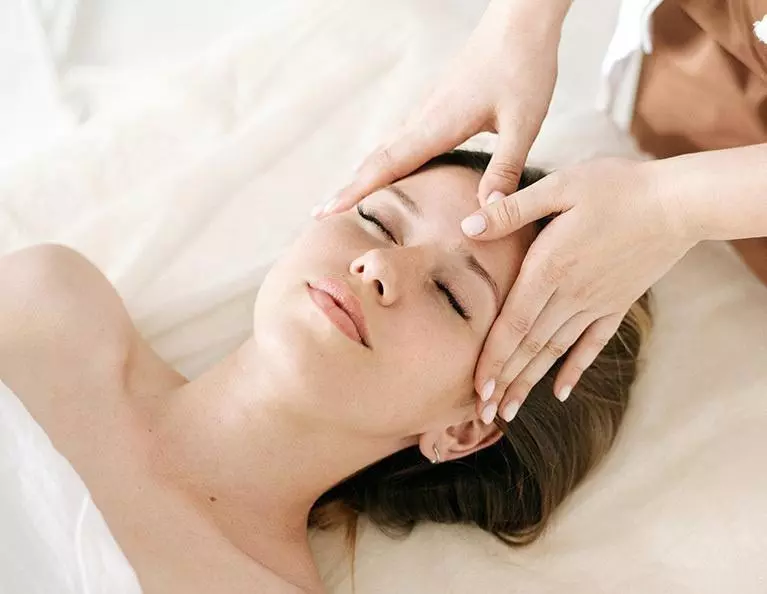Most people have either experienced or heard of dandruff at some point in their lives. Shedding dead skin cells (flakes) is a completely normal process. Skin cells regenerate about every four weeks. When this happens, the old dead skin cells are shed. In fact, you shed dead skin cells every day. This includes your scalp. Most of the time, you never even notice when you shed skin cells. However, if the skin cells on your scalp regenerate at a faster than normal rate, they can also shed in clumps of cells that are visible. This is called dandruff. A little-known fact is that there are two types of dandruff: oily and dry. Let's take a look at the differences between the two and when it is time to seek professional trichological treatment.
What is Dry Dandruff?
Dry dandruff is characterized by small, white flakes that fall off of the head and out of the hair. It can very much be compared to having the look of dust that lands on your hair and clothes, except it is white in color.
Causes
Moisture in the scalp is regulated by a lipid film. If the integrity of the lipid film is compromised, moisture escapes and the scalp dries out. A dry scalp occurs which can lead to dandruff. Another cause is the sebaceous glands failing to produce and secrete enough sebum (an oily substance that protects and moisturizes your skin). The scalp can then dry out and result in dandruff. Dry dandruff can affect anyone of any age group, but these factors have been linked to the likelihood of developing dandruff:
- Genetics
- Temperature
- Age (The skin of elderly people tend to dry out more quickly)
- Stress
Small, white, and they fall off of the head and out of the hair. They develop on a very dry scalp that tends to be itchy. This type of dandruff should be treated with a special gentle shampoo.
Symptoms
The severity of dandruff can vary from mild, which is barely noticeable to severe. Though with dry dandruff tend to experience the following symptoms:
- Loss of moisture
- Itching
- Tight skin
- Inflamed skin
- Redness
Treatment
For most people with dry dandruff, a very mild, gentle shampoo will do the trick. Mild shampoos help to reduce symptoms while helping to support and nurture your scalp back to health.
What is Oily Dandruff?
Oily dandruff looks much different than dry dandruff. It is characterized by large flakes that are yellow in color. These flakes are greasy in appearance and to the touch. They tend to stick to the head and hair versus falling off.
Causes
Oily dandruff most commonly occurs in those with excess oil production and is the result of a domino effect. In most cases the sebaceous glands, which are responsible for producing sebum, go into overdrive and produce excess sebum. This then enables germs and other microorganisms to multiply at a much faster rate, which then shed in large groups of skin cells that are held together by excess sebum.
Malassezia yeast is the most common culprit. It is naturally occurring and plays the role of breaking down dead skin cells and sebum. However, if it multiplies rapidly due to excess sebum, then the scalp also produces skin cells at a faster rate, which are then sloughed off.
Failing to shampoo often enough can also cause oily dandruff because the dead skin cells build-up and then shed in the form of large flakes.
Symptoms
Those with oily dandruff tend to experience the following symptoms:
- Itchy scalp
- Greasy, yellow flakes
- Increased sebum production
Individuals who are also experiencing severe inflammation, redness, and itching have a more severe form of dandruff called seborrheic dermatitis.
Treatment
Shampooing more frequently can reduce flake build-up and relieve symptoms. Shampoos with piroctone olamine and zinc pytrithione tend to work well against Malassezia. On the other hand, salicylic acid can relieve inflammation and loosen flakes.
When Should You Seek Professional Trichological Help?
In most cases, true dandruff can be treated with over-the-counter remedies. However, the symptoms of dandruff very closely mimic other issues of the scalp such as true fungal infections. If you suspect, there may be something more going on than run-of-the-mill dandruff, you should seek professional treatment. As San Jose's most trusted hair restoration studio, we offer a full line of trichological services to clear up any existing issues and help you maintain a healthy scalp that enables the growth of healthy hair. Schedule your FREE hair loss analysis today!







